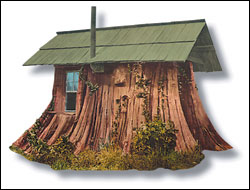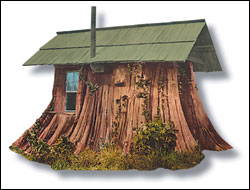People tell me how surprised they are at liberal Seattle’s prudish crackdown on strip clubs and lap dancers, but it seems totally in character to me. Five years ago, I wrote about Seattle neo-Victorians, the folks who pushed Sidran laws, maintained the teen dance ordinance, and wanted to ban certain legal alcoholic beverages in selected neighborhoods because they attracted the wrong sort of people—a sort of “you are what you drink” form of segregation (see “Blue Law Bonanza,” Aug. 30, 2000).
Seattle is a town brimming with nanny-state liberals, Calvinist socialists, and middlebrow public officials who go junketing to Singapore, where law and order is maintained at the end of a brine-soaked cane.
At Expo ’05 in Aichi, Japan, Singapore’s pavilion had a slogan on the front: “A world without walls,” it declared. Excuse me, but isn’t Singapore the epitome of a walled city, with draconian drug laws and bans against littering, spitting, Playboy, protest, “unnatural sex,” and gum chewing? It’s even illegal not to flush a public toilet. The joke is that Singapore is a “fine” place because there’s a fine for everything.
Proponents argue that the laws work, the streets are safe, and that such rules are necessary for dealing with high urban density. As Seattle floats atop a real-estate bubble that increasingly makes the city affordable mostly to the affluent, we can probably look forward to more laws intended to make the whole town more like Singapore (recycle or else!). That is part of the price of urban gentrification, the signs of which are everywhere.
I recently completed a long-planned move back to Seattle. I was born and raised here, have lived half of my half-century within the city limits, and continued to work in the city most of the years I lived in Kirkland.
I grew up in the Rainier Valley during a time when the economy was in the tank. Our neighborhood was plunging downhill, and the city was depopulating courtesy of white flight and a shrinking Boeing. It seems crazy today to think that for a couple of decades, the city actually lost population. You could get a great house in Mount Baker or Madrona for $25,000. It seems even crazier to be nostalgic for it, but sometimes I am. Not for the time when a friend’s dad, a laid-off Boeing worker, was reduced to being a paperboy to feed his family. But for a time when basic middle-class amenities were available to households with one wage earner making a modest income.
Now gentrification is scrambling the old neighborhoods. My partner and I were out to dinner with two real-estate-agent friends, and one half-jokingly said that “White Center is the new Ballard.” Apparently, Shoreline used to be the new Ballard, until it got pricey. So first-time single-family home buyers have to go farther afield. It left me wondering: If the old square-head Ballard is gone, and the new affordable Ballard has moved south, what is the current Ballard? The new Laurelhurst?
And new neighborhoods are emerging. A friend who lives near 25th Avenue East and East Madison Street was telling me about the various names being tried out for his neck of the former woods. Madison Heights is one, as it rises above the recently gentrified Madison Valley and the old gentry of Madison Park. The Slope is another. Or, simply, The Summit.
Seattle seems to have gone neighborhood crazy, a trend driven by real-estate prices. Your neighborhood used to be defined by where you went to high school: Lincoln, Garfield, Roosevelt, Franklin, Nathan Hale—these names told Seattleites everything they needed to know about your race, class, or ethnic background, or at the very least, the milieu you were raised in. That ended with busing and school choice. Now you see neighborhood creep—how desirable places like Ravenna and Leschi have snuck into once marginal neighborhoods. Madison Heights is an easier sell than North Central Area, I bet.
Seattle—already a pretty suburban city due to fairly low housing densities—has further suburbanized as it has moved upscale, particularly when it comes to retail. In the 1990s, the hallmark of Eastside urbanization was getting a Starbucks. Now the hallmark of Seattle suburbanization is the building and revitalization of in-city malls, from Pacific Place to Northgate. Take University Village. If you shop at U Village, you have no moral authority over anyone who shops at Bellevue Square. Once dominated by a bowling alley and the 1970s low-budget retail icon Lamonts, U Village is now a yuppie fun zone for Pottery Barn shoppers. Both malls have their pluses and minuses, but it’s a matter of taste, not values. Bellevue has my permission to wipe that sneer off Seattle’s face when it comes to dissing the burbs as morally inferior, at least when it comes to consumerism.
The most rapidly densifying place in King County is not Seattle but downtown Bellevue, which is continuing an inexorable march toward big-city-dom. It makes me think that if Lake Washington weren’t there, Seattle and the Eastside would have merged long ago, having met in the middle to become virtually indistinguishable. As it is, the water boundary, even with the bridges, creates a kind of Darwin’s finches experiment between how blue cities and red suburbs develop. It seems to me that the dominant regional trend is that the market is driving everyone toward a similar destination: a decentralized urban region for the affluent where everyone is within reach of a Pottery Barn and a PCC.







